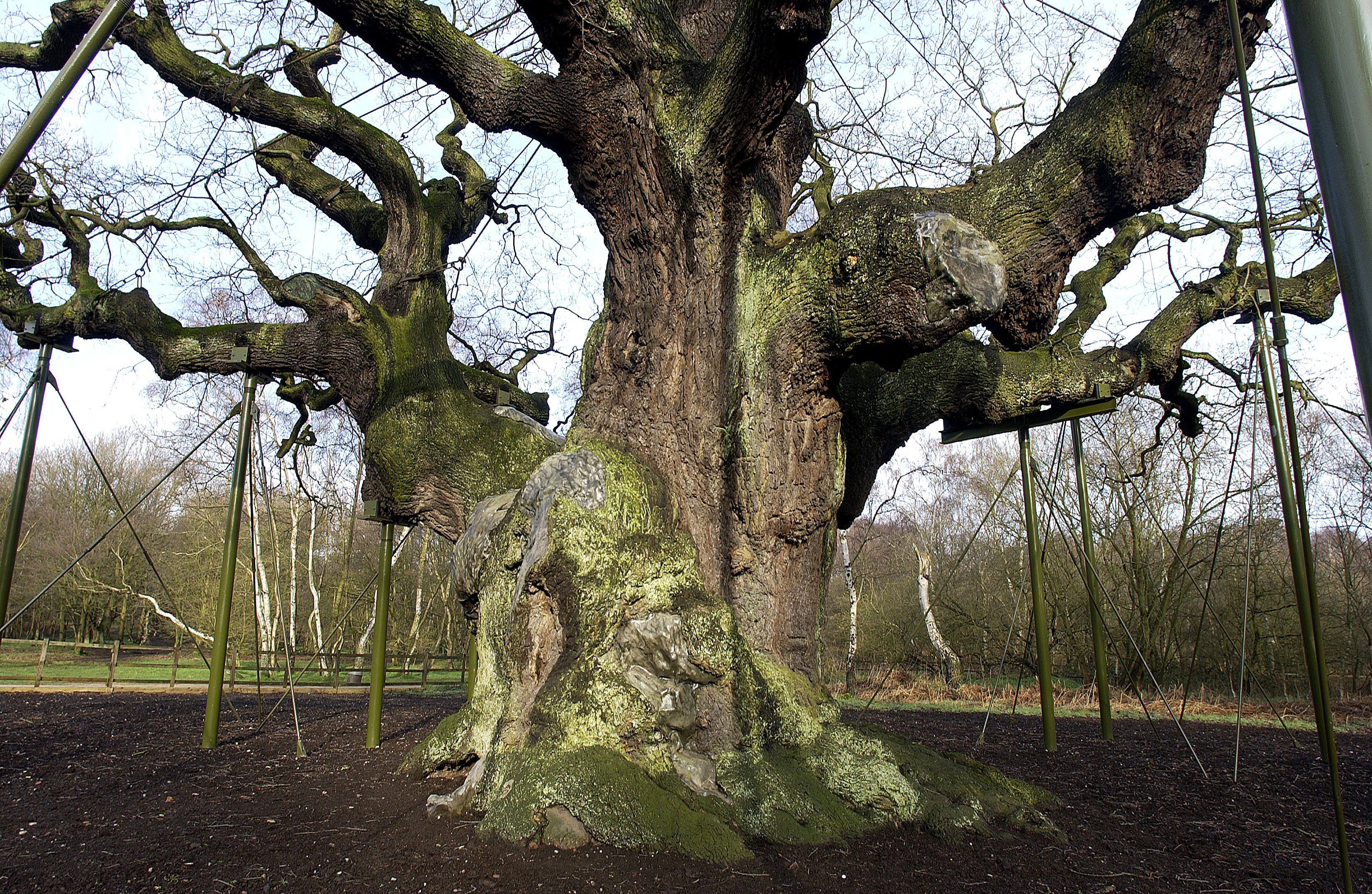Ancient trees
What is an ancient tree?
How old an ancient tree is depends on the species. Some species can live longer than others with yews, oaks and sweet chestnuts topping the age charts at over 1000 years. Other species, including birch and willow, live shorter lives.
A tree is defined as ancient if it is
- In the third or final stage of its life (this stage can go on for decades or centuries).
- Old relative to others of the same species.
- Interesting biologically, aesthetically or culturally because of its great age.
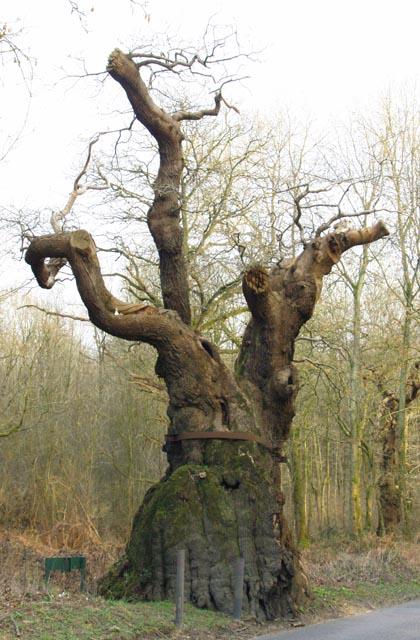
The Big Belly Oak is an ancient tree in Wiltshire. (Photo: Bruce Beattie/WTML)

A hollowing ancient ash tree. (Photo: David Alderman)

An ancient field maple. (Photo: David Alderman)

An ancient hawthorn tree. (Photo: David Alderman)
What do ancient trees look like?
Ancient trees don’t always look the same, depending on the species and where it grows. But in general, there are several ancient characteristics and the more a tree has the older it’s likely to be.
Look for these key features:
- Crown that is reduced in size and height
- Large girth in comparison to other trees of the same species
- Hollow trunk which may have one or more openings to the outside
- Stag-headed appearance (look for dead, bare, antler-like branches in the crown)
- Fruit bodies of heart-rot fungi growing on the trunk
- Cavities on trunk and branches, running sap or pools of water forming in hollows
- Rougher or more creviced bark
- An ‘old’ look with lots of character
- Aerial roots growing down into the decaying trunk
Explore the ancient characteristics of each species.
Read the ancient tree guides to find out more about ancient, veteran and other trees of special interest.
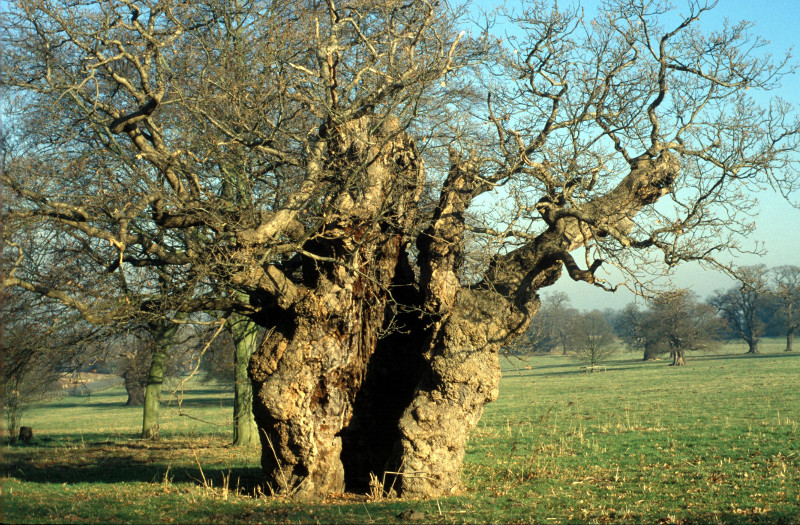
Look for the reduced crown and hollowing trunk. (Photo: Ted Green/WTML)
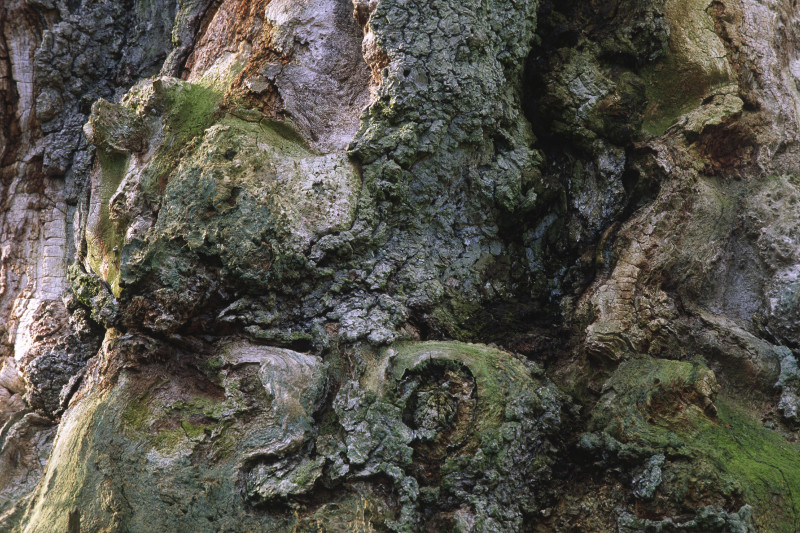
Many species will develop rough bark such as this sessile oak. (Photo: Richard Becker/WTML)
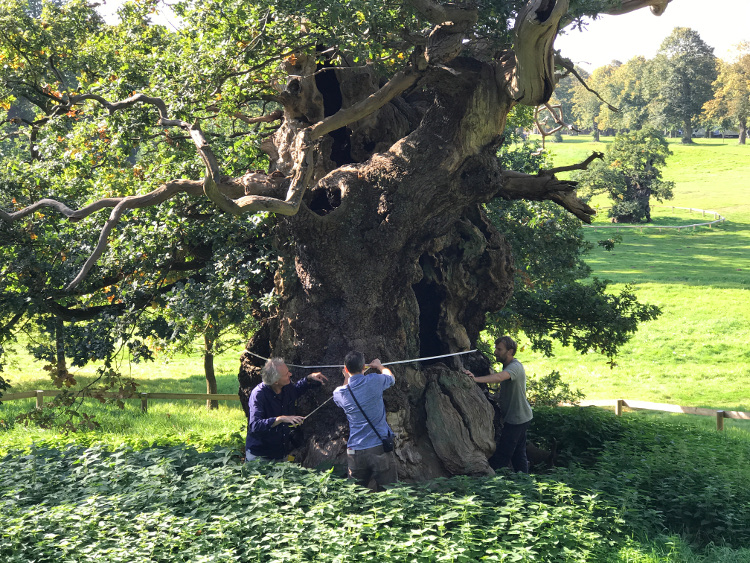
There will be a large girth in comparison with other trees of the same species. (Photo: David Alderman)
What is a lost ancient tree?
These are trees which have already been recorded, but are later discovered to have been cut down, blown over, collapsed, or otherwise removed, leaving no more than a low stump.
A new tree record can’t be added as a lost tree, although you can record it as a remnant e.g. stump. We use this information to assess the rate of recent loss of our ancient trees.
A tree originally recorded as a standing dead ancient tree remains this until it's cut down or is removed; it can then be updated to a lost tree.
Please report or record the reason for loss if known.
